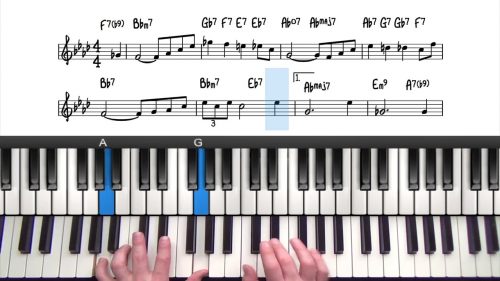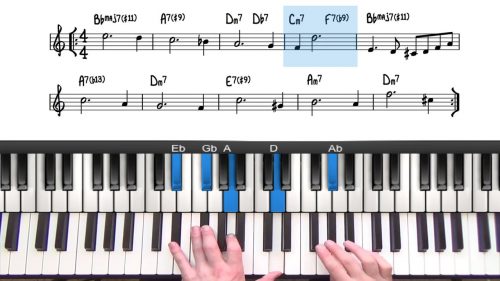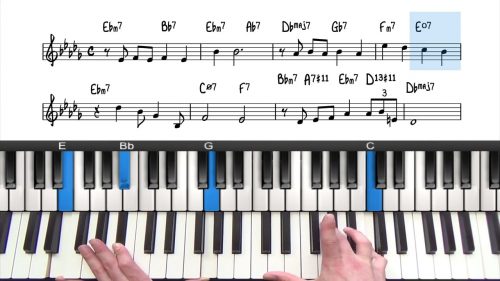How To Play Like Herbie Hancock
In this course we will take a look at one of the most influential modern jazz pianists, Herbie Hancock. He is one of the main figures in the development of jazz from the 1960’s onwards, from hard bop and post bop to modal and free jazz, 70’s funk, jazz fusion and later even to popular music.
Born on April 12 1940 in Chicago, he started with classical music at an early age. Later on he studied with the great pianist Chris Anderson, who Hancock considers to be his harmonic guru. He also studied harmony and voicings from the vocal group HiLows, arranged by pianist and composer Clare Fischer.
After leaving the Grinnell College in the early 60’s, Hancock worked with Donald Byrd and Coleman Hawkins in Chicago. In 1963 he joined the Miles Davis Quintet which became one of the most important and influential groups of the 60’s and still has a huge impact on jazz today.
During the time in Miles band, Hancock also recorded numerous albums as a leader as well as a sideman. From that time, some of the most notable recordings as a leader are Maiden Voyage, Empyrian Isles and Speak Like A Child.
In the 70’s Hancock became fascinated with electronic instruments such as synthesizers and electric pianos. He also was a big part of the early fusion era, mixing jazz with R&B and funk. Great records to check out from that time are Head Hunters and Thrust.
Since the 70s Herbie Hancock has worked continuously in numerous different genres, from classical to pop, funk and disco, while always playing and recording jazz albums. He has collaborated with countless jazz artists such as Chick Corea, Pat Metheny and Michael Brecker to pop artists such as Joni Mitchell, Norah Jones and Tina Turner.
The Transcription
For this transcription I have chosen the intro and first chorus of “Someday My Prince Will Come” from Hancock’s solo piano record, “The Piano”. The first half is played rubato and then it moves into time for the second half of the chorus. This transcription showcases Hancock’s melodic and harmonic creativity and, when he goes into time, how he uses rhythmic ideas to provide interest and forward motion.
Practice Tips
-
Being familiar with this tune in its original form will be a great help to understanding what Hancock is doing in this transcription. The lead sheet is written out above the transcription above, or you can find a lead sheet in the real book or online.
-
Hancock uses a lot of upper structure triads to create harmonic tension - check out some of the upper structure triad videos on this site to understand this process.
-
You will notice that Hancock re-harmonises some of the chords when compared to the lead sheet. Take these re-harmonisations and try applying them to other tunes with similar progressions.






